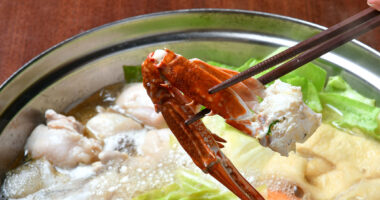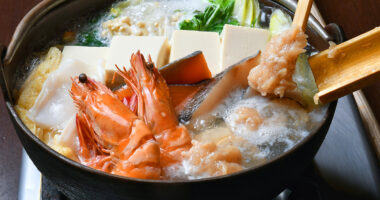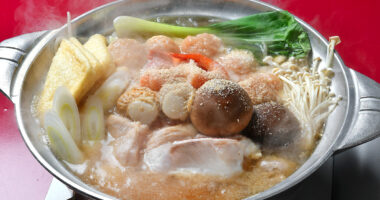Developed during the Edo period, ukiyo-e is a genre of woodblock prints whose distinctive compositions and vivid colors captivated the Impressionist painters of 19th-century Europe.
Among the artists who created ukiyo-e, none left a greater mark than Katsushika Hokusai. Active in the late Edo period, Katsushika Hokusai was renowned for his bold compositions and expressive style, and is remembered as an artist who influenced creators around the world.
The SUMIDA HOKUSAI MUSEUM (hereafter referred to as “Sumida Hokusai Museum”) in Tokyo’s Sumida Ward is the perfect place to fully experience the enduring appeal of Katsushika Hokusai’s many masterpieces.
Built in the area where Katsushika Hokusai was born, raised, and spent most of his life, the museum features the “Education Room—Discover Hokusai—” on the 4th floor. Here, visitors can explore the connection between Katsushika Hokusai and Sumida, as well as his artistic career, through full-scale high-resolution replicas of his masterpieces and interactive touch panels.
For international travelers, it’s an invaluable spot to gain a deeper understanding of ukiyo-e and Japanese culture.
A journey through the artist’s life: Education Room—Discover Hokusai—
About a five-minute walk from Ryōgoku Station on the Toei Ōedo Line, you’ll find the Sumida Hokusai Museum.
The exterior was designed by world-renowned architect Kazuyo Sejima. Its mirrored aluminum panels subtly reflect the surrounding downtown scenery, allowing the building to blend seamlessly into the neighborhood.
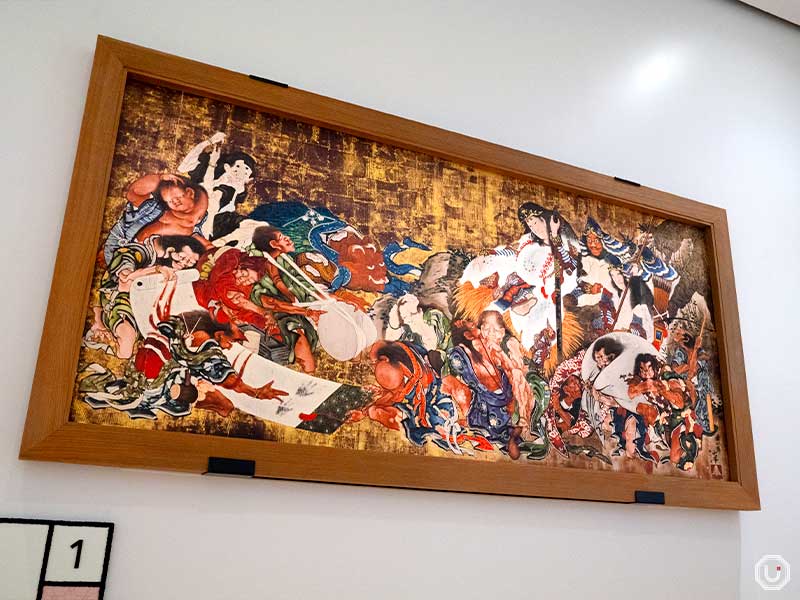
Katsushika Hokusai, “Susanoo no Mikoto Yakujin Taiji no Zu” (“Susano-o no Mikoto Making a Pact with the Spirits of Disease”) (Restoration); collection: The Sumida Hokusai Museum / Production: TOPPAN Inc.
Right inside the entrance, you’ll be greeted by a massive votive tablet reproduction of Katsushika Hokusai’s late masterpiece, “Susano-o no Mikoto Making a Pact with the Spirits of Disease.”
This work was originally dedicated to Ushijima Shrine and displayed in its main hall. It was lost in the Great Kantō Earthquake, surviving only in a single monochrome photograph. Using both traditional craftsmanship and cutting-edge digital technology, it has been magnificently reconstructed.

Katsushika Hokusai, “Scenery on Both Banks of the Sumida River”
Another highlight is the digital reproduction of the massive seven-meter-long masterpiece, “Scenery on Both Banks of the Sumida River.”
At the Sumida Hokusai Museum, visitors can use touchscreens to zoom in on the work and compare the Edo-period scenery with present-day photographs.

Multilingual touchscreen monitor
The exhibition room supports English, Simplified and Traditional Chinese, and Korean, ensuring that international visitors can explore the museum with ease.
Evolution of style: Katsushika Hokusai’s global legacy
In “Education Room—Discover Hokusai—,” the artist’s life and major works are introduced chronologically.
The exhibition is designed to be accessible even for first-time viewers of ukiyo-e, presenting Katsushika Hokusai’s career in six distinct periods.
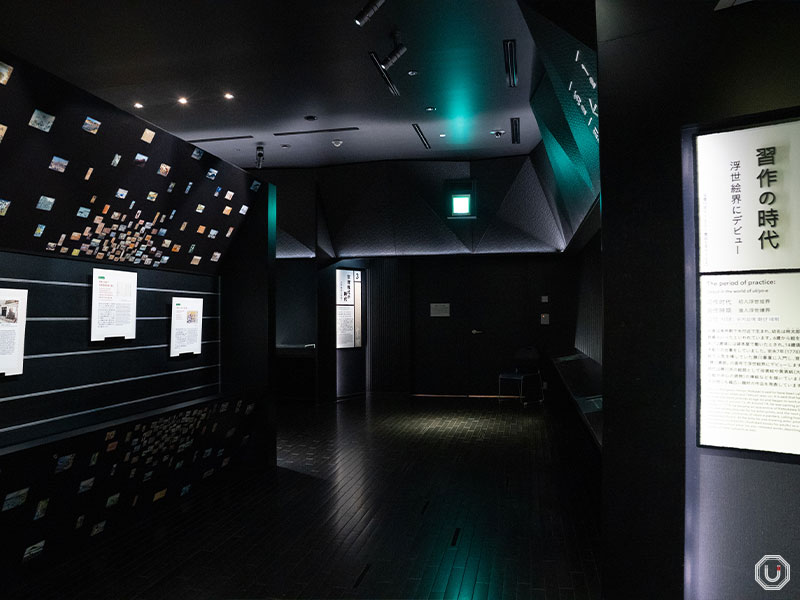
The suggested route begins with Katsushika Hokusai’s early studies, moving counterclockwise through his career
Because ukiyo-e are highly sensitive to light and humidity, original works cannot be displayed for long periods.
Instead, the Sumida Hokusai Museum exhibits full-scale, high-resolution reproductions that allow visitors to closely appreciate the vivid colors and brushwork.
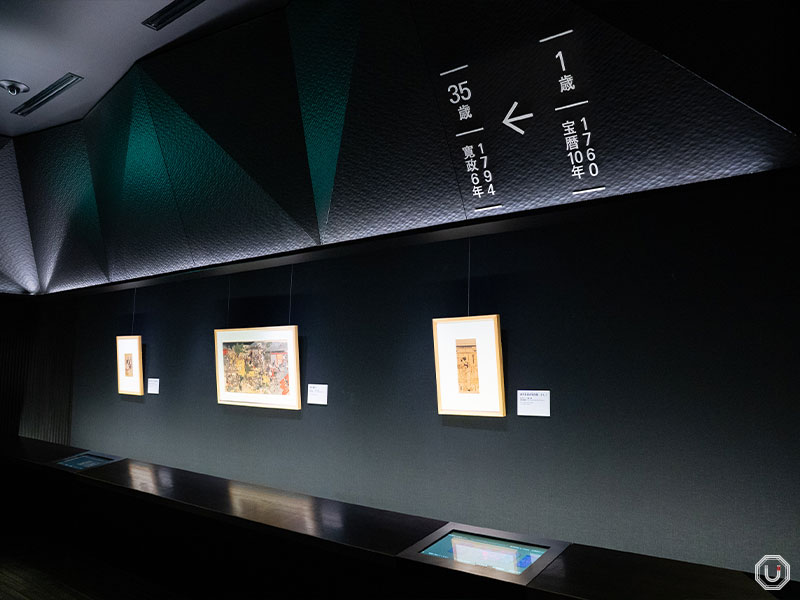
Exhibit from Katsushika Hokusai’s “The Period of practice”
Over the course of his life, Katsushika Hokusai changed his name (artistic pseudonym) more than 30 times, with each new period marked by a shift in style.
His career began when he apprenticed under Katsukawa Shunshō, a master known for actor portraits. During this time, Katsushika Hokusai called himself Katsukawa Shunrō and produced a variety of early works.
In the “The period of the Sōri style,” influenced by the Rinpa school, he developed a distinctive style that set him apart from his predecessors. Later, in the “The period of illustrations for yomihon,” he created novel compositions and experimented with spatial depth while producing illustrations for yomihon—popular late-Edo novels—and numerous hand-painted works.
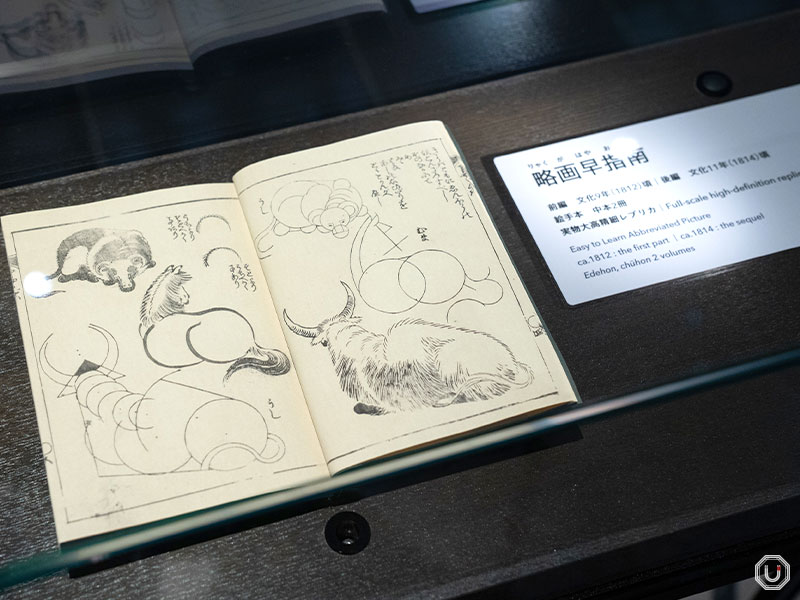
Katsushika Hokusai, “Ryakuga Hayaoshie” (“Quick Guide to Drawing”)
After the age of 50, Katsushika Hokusai began focusing on instructional drawing manuals for his pupils. These handbooks vividly depicted people, animals, landscapes, and objects using ukiyo-e techniques. Among the most famous is “Hokusai Manga” (“Sketches by Hokusai”).
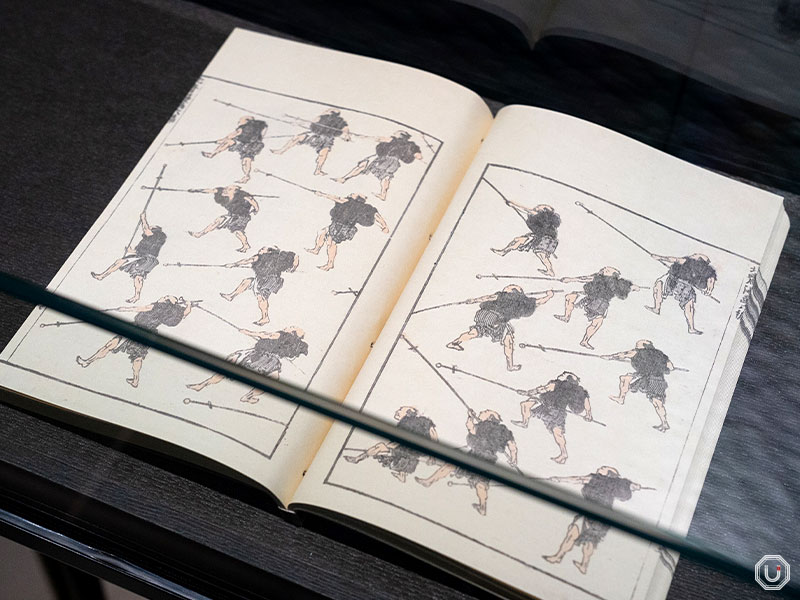
“Hokusai Manga” (“Sketches by Hokusai”)
In the section devoted to the “The period of books of drawing manuals,” visitors can explore the interactive touchscreen “Encyclopedia of Katsushika Hokusai Drawing Manuals” which is filled with engaging activities.
Guests can solve puzzles based on Katsushika Hokusai’s illustrations or try tracing the drawings themselves, making it enjoyable for both adults and children.
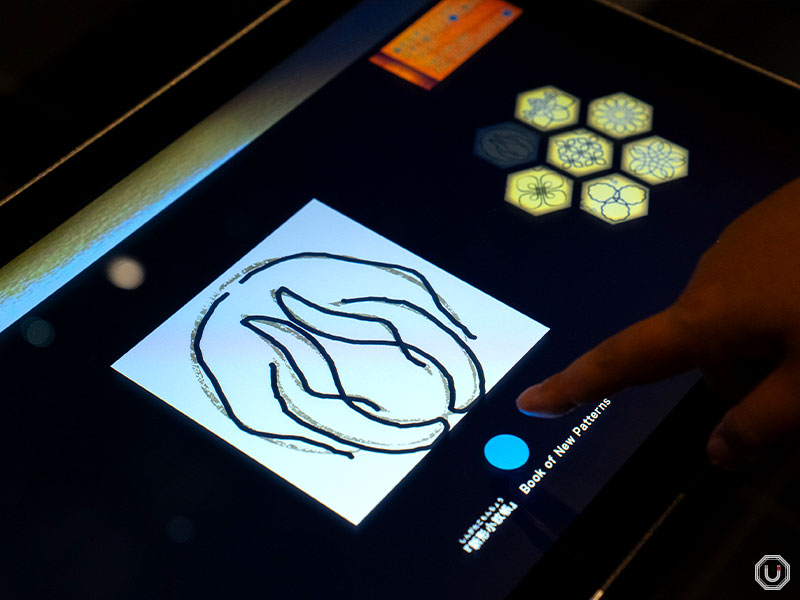
Interactive station: Recreating kimono patterns designed by Katsushika Hokusai
Katsushika Hokusai’s world-famous series: “Thirty-six Views of Mount Fuji”
The work that secured Katsushika Hokusai’s place in art history was his late masterpiece, “Thirty-six Views of Mount Fuji.”
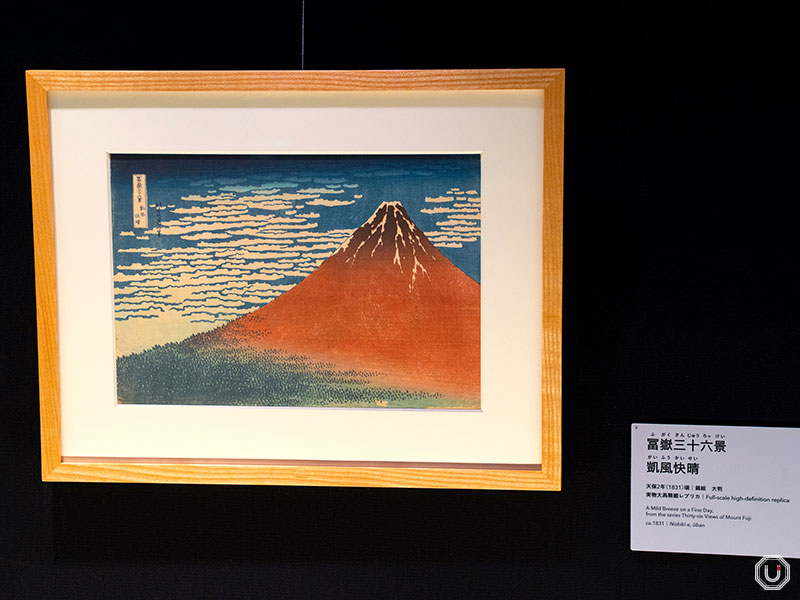
“A Mild Breeze on a Fine Day,” from the series “Thirty-six Views of Mount Fuji”
This celebrated series of 46 prints—including “Under the Wave off Kanagawa” (also known as “The Great Wave”) and “A Mild Breeze on a Fine Day,” from the series “Thirty-six Views of Mount Fuji” (‘Red Fuji’)—depicts Mount Fuji from multiple perspectives. With its bold, innovative compositions and brilliant colors, the series captivated audiences and firmly established landscape prints as a major genre in Japan.
In 1867, the Paris International Exposition introduced ukiyo-e to Europe, sparking a widespread craze. Katsushika Hokusai’s prints profoundly influenced Western artists and became central to the movement later called Japonisme.
In the section devoted to the “Nishiki-e Period,” visitors can explore these works on high-resolution touchscreens. Zooming in reveals details often missed by the naked eye, from the delicate lines of the waves to the expressive features of the people within the scenes.
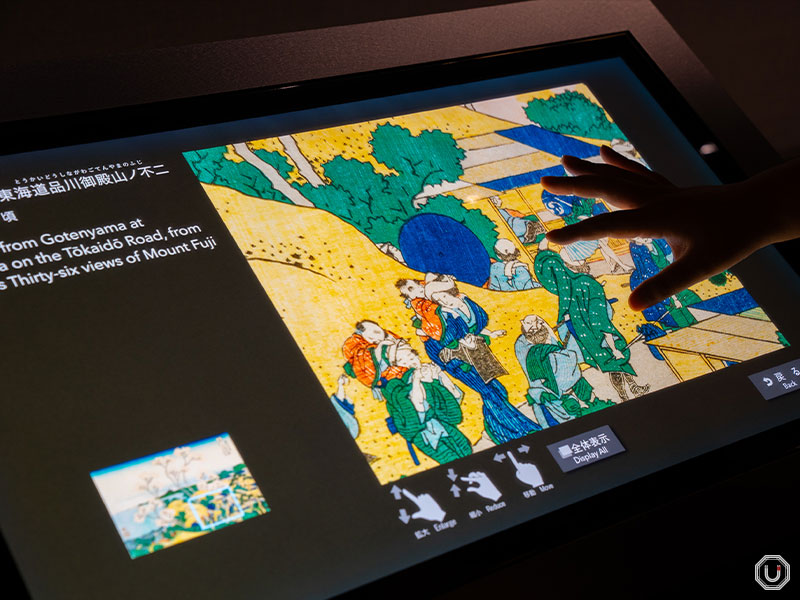
High-resolution interactive display at the Sumida Hokusai Museum
Even in his later years, Katsushika Hokusai continued to evolve, entering what is known as “The period of original paintings.” During this time, he adopted the signature “Manji” and devoted himself to creating hand-painted works that depicted religious themes and classical stories from Japan and China.
One highlight of the exhibition space is a reconstructed model of Katsushika Hokusai’s studio, offering a glimpse into his daily life as he worked alongside his daughter, Oei, who was also an accomplished artist.
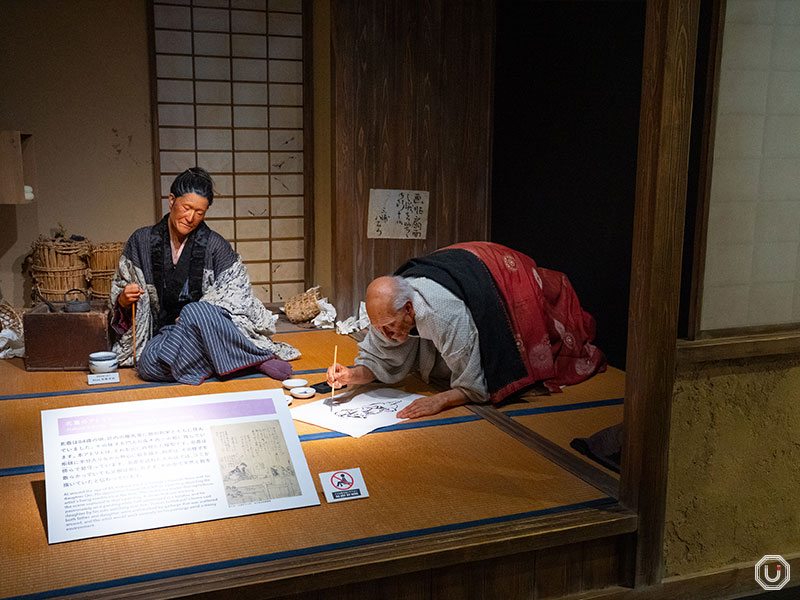
Reconstruction model of Katsushika Hokusai’s studio
While Education Room—Discover Hokusai— primarily features high-resolution replicas, visitors can view original ukiyo-e prints and hand-painted works in the museum’s special and thematic exhibitions.
Since exhibitions change seasonally, it’s a good idea to check the official website before visiting for the latest schedule.
The surrounding neighborhood also offers plenty to explore, including major attractions such as Tokyo Skytree and the Edo-Tokyo Museum, as well as traditional craft shops where visitors can experience Japanese confectionery, Edo kiriko cut glass, and other artisan techniques. It’s the perfect area to enjoy Japanese culture from many perspectives.
At the Sumida Hokusai Museum, you can discover the brilliance of one of Japan’s most celebrated artists.
Information
| Facility name | すみだ北斎美術館 THE SUMIDA HOKUSAI MUSEUM |
|---|---|
| Address | 2-7-2 Kamezawa, Sumida-ku, Tokyo
|
| Access |
Ryōgoku Station 9-minute walk from Ryōgoku Station East Exit
Ryōgoku Station 5-minute walk from Exit A3
|
| Phone number | 03-6658-8936 |
| Hours | 9:30-17:30(last admission is 30 minutes before closing) |
| Closed | Monday(open if Monday is a nat’l holiday; closed the following weekday) unscheduled holidays due to exhibition changes and New Year’s holidays |
| Admission |
Admission to the “Education Room—Discover Hokusai—” General admission / 400 JPY (tax included) 300 JPY (tax included) for groups of 20 or more, or for visitors aged 65 and over University & high school students / 300 JPY (tax included) 200 JPY (tax included) for groups of 20 or more Junior high school students and younger / Free Visitors with a disability certificate, ai no-techō (Intellectual disability certificate), ryōiku-techō (Developmental Disability Certificate), Mental disability certificate, or Atomic Bomb Survivor’s Handbook (includes one companion) / Free (certificate required) Admission to Special Exhibitions Varies by exhibition; please check the museum’s official website for details |
| Official website | https://hokusai-museum.jp/ |
| Pamphlets | Available in Japanese, English, Chinese (Simplified & Traditional), Korean, and French language only the museum’s overview brochure |
| Exhibit audio guides | None |
※All museum information in this article is accurate as of August 2025.

